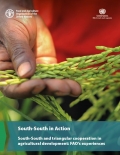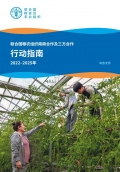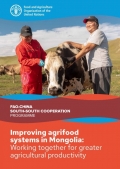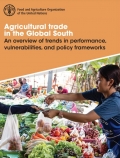文件

South-south Cooperation
04 Aug 2022
This publication outlines key features of South-South and Triangular Cooperation (SSTC) and how FAO has applied SSTC to the delivery of its mission. The case studies presented provide a window on how SSTC has contributed to alleviating hunger and malnutrition in countries across the global South and has helped build resilience in the face of climate change and other development challenges. The lessons learned from these experiences are feeding into the new FAO SSTC Guidelines for Action (2022–2025) and will guide FAO's future results-based SSTC programmes.
South-south Cooperation
19 Jul 2022
在过去二十年间,联合国粮食及农业组织(粮农组织)将南南 合作及三方合作视为促进农业发展、粮食安全、农村发展、减少贫 困和营养改善的关键交付模式。自2012年以来,粮农组织加强了 对南南合作及三方合作的支持,随着南南合作及三方合作在粮农 组织内逐步制度化,其项目规模也在不断扩大。
South-south Cooperation
26 May 2022
Sustainable agricultural development lies at the very heart of FAO’s mission to achieve food security and ensure that people everywhere have regular access to enough high-quality food to lead active and healthy lives.
Agrifood systems are driven by the men and women whose daily lives are dedicated to working on the land and on waters and to managing food systems. Their skills, toil and years of accumulated experience are the backbone of food systems — they propel communities and countries. The efforts of agricultural workers represent a vital force moving us towards achieving the Sustainable Development Goals (SDGs) of the United Nations 2030 Agenda for Sustainable Development. South-South...
Civil Society
14 Apr 2022
The latest installment in PSUP’s partnership brief series promoting FAO’s work with CSOs highlights the engagement between FAO and the World Rural Forum in support of family farmers and specifically the initiatives of the UN Decade of Family Farming 2019-2028. 
South-south Cooperation
04 Apr 2022
The importance of South countries in global agrifood markets and trade has been increasing over the last two decades, with growth in their participation, as both exporters and importers, having outpaced that of North countries. South countries, as a group, are net exporters of fruits, vegetables, fats and oils, and tropical products such as coffee, tea, cocoa and sugar, and net importers of key food commodities such as cereals, meat and dairy products. These patterns reflect structural changes along the development path. Agricultural productivity growth has fuelled expansion in the production of some products, while population growth and urbanization, rapid economic growth and...
